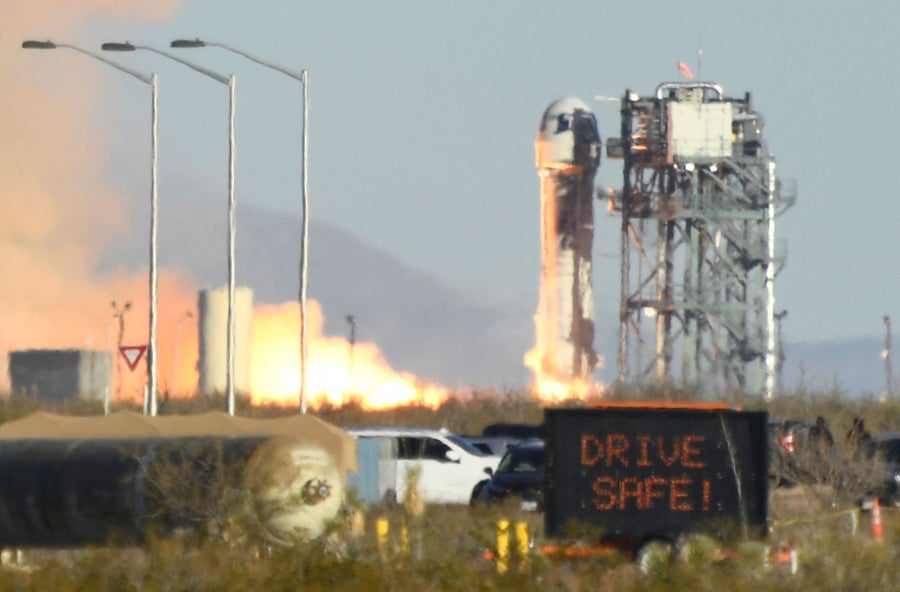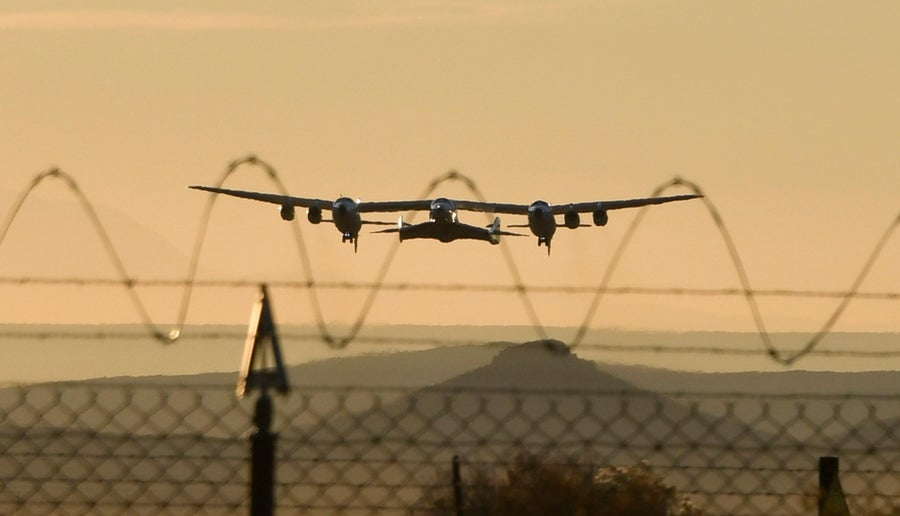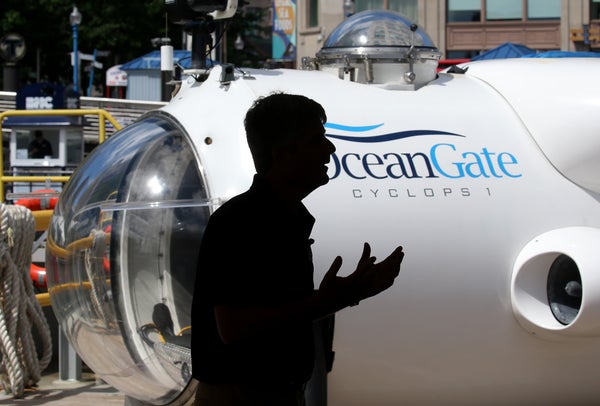As we await the final investigation results from the loss of the Titan submersible, which killed five people last summer at a depth of over 12,000 feet in the Atlantic, the tragedy has drawn questions far above the ocean depths, asking whether similar hazards face the burgeoning private exploration of space.
To be more realistic, these questions lead to an uncomfortable truth about what eventually will happen in space. No matter how safe a system or stringent regulations, someday, somehow, something will go wrong in private space travel, and people will die. So, how much can be done to minimize the chance of this occurring, and how do we react when it inevitably does?
This risk, its possible outcomes and their mitigation have long been of interest to me. In 2000 I signed up Dennis Tito to be the first private citizen to buy a ticket to the International Space Station. I later founded Orbital Outfitters, a firm that developed space suits for commercial spaceflight, and worked with the Texas Space Alliance to pass tort reform legislation enabling Jeff Bezos’s Blue Origin to fly customers aboard suborbital spaceships.
What is clear is that while there are similarities between space travel and visiting the bottom of the ocean, and both represent the edges of human technological capabilities, there are also significant differences. These include both the physics and rules governing the bottom of the ocean and the edge of space. Understanding these differences is important, to better avoid inaccurate risk assessments that could needlessly stifle further voyages into either domain.
Both places are clearly not “human-friendly,” having only become accessible with the advent of modern technologies, chiefly life support that creates a “bubble” of air around those inside that is the correct temperature and pressure.
In the oceans, superstrong materials protect this bubble and keep the pressure out. In space, the bubble keeps the pressure in. In either, breaching the bubble can bring death to those inside—a demise that is instantaneous at the extreme pressures of the deep sea, but usually far more gradual in space via the slow leakage of precious air. In space, one has time to seal leaks, while donning a space suit. Both remedy and rescue are possible. In space there are other unique dangers, yes—primarily exposure to radiation and microgravity—but these are long-term effects of greatest concern for those who plan to live in space rather than anyone merely visiting.

And, akin to how visiting the ocean’s floor in a submersible differs from scuba diving in its shallows, spaceflight similarly has two distinct regimes. Short suborbital flights—like those presently offered by Blue Origin and Virgin Galactic—carry ships and passengers on ballistic trajectories to just beyond the edge of space before naturally falling back into the welcoming atmosphere. These typically only last minutes, and they aim for heights in modest excess of 62 miles—the so-called “Kármán line” widely recognized as where outer space begins. Orbital flights involve far greater energies, speeds and altitudes—and in principle can be endless once a stable orbit is reached, well above frictional interference from our planet’s momentum-sapping atmosphere. This is the lofty realm of the International Space Station and China’s Tiangong station, and the destination for several planned private habitats now being built; visits there can last days or weeks—even months or years with proper reprovisioning.
Just like a voyage to the bottom of the sea, the difficulty of reaching orbit is only half the problem; returning is hard, too—but with important differences. The act of rising from the bottom of the ocean must happen slowly to avoid dangerous expansion of gases, and it is only in the last few thousand feet that the risk of a massive pressure-induced collapse is reduced. Returning from orbit happens quickly and involves rapidly bleeding off orbital speed (usually in excess of 10,000 miles per hour), creating high gravitational force, while Earth’s atmosphere fuels a burning fireball of incandescent plasma around a spaceship. These effects are much less intense for suborbital flights like those offered by Blue Origin and Virgin Galactic, but they are still present, which is why the FAA requires redundant air/oxygen supplies and safeguards against cabin depressurization on all such flights.
This brings us to regulations and personal risk assessment. Contrary to popular notions that space travel is a Wild West where anything goes, in fact there are extensive bodies of regulatory work governing suborbital and orbital flights alike. For the latter, multiple international treaties and agreements demand that any nation that is home to a company or group attempting to do anything in orbit is liable for anything those companies or groups do under that nation's laws.
For crewed suborbital flight, the FAA is leading the way with a (still maturing but already robust) regulatory framework. Designed to ensure public safety, these regulations also extend to the well-being of any people on board, be they professional “commercial astronauts” or paying passengers (“private astronauts”)—those NASA ponderously labels “spaceflight participants.” Whatever they are called, before launching a single person into space, U.S. space launch companies must painstakingly demonstrate to the FAA their compliance with an extensive list of safety requirements. Similarly, companies must explicitly explain potential safety risks to all passengers and crew—and gain their written acknowledgement and acceptance of these risks.
Thus, in practical terms, here in the U.S., no space launch operator would be allowed to do what the operators of the Titan did. While the laws are evolving, they are there. Yes, in a general sense, the U.S. government does not “certify” launch vehicles as it does aircraft and permits the space industry to follow industry best practices—for now. The commercial spaceflight industry is simply too new for there to be the depth of understanding and experience to get everything right.
This brings us back to the greatest quandary facing private spaceflight: When it comes to space, do civilians have the right to put themselves at the same level of risk as government employees in space face daily? I say yes. If our national leaders can pay someone to risk their life flying into space, shouldn’t citizens be allowed to take the same risks? This is the central question.
Humans have been flying to and in space for decades, and for a myriad of reasons. The pursuit of science, national or personal pride, exploration or personal enjoyment have all been rationales. We can ask if the astronauts (or Senators) soaring to orbit on NASA’s space shuttles were as safe as private astronauts on a Blue Origin New Shepard suborbital flight, or vice versa. But we cannot ask if one has more of a right to accept risk than the other. Again, the difference is not the risk itself but who is deciding that risk is worthwhile—whatever their goals.

Civilians will die in space. They will die over and over as more and more go and venture further and further out. The most important thing is that no one dies because of hubris or ignorance of the risks. I deeply believe the proper path forward is to build on the “safety first” culture that already exists in human spaceflight, while being clear that those doing so are engaging in something inherently dangerous. In other words, while we do all we can to minimize the risk, we do not hide nor deny it. Rather, we own it.
The Titan disaster was a true tragedy. It occurred in a mature industry with a heretofore flawless record. Meanwhile, over 300 citizen explorers have died on the slopes of Everest alone, and on average, some 60 people in the U.S. die each year while skiing, snowboarding or skydiving. Yet until Titan not one person had ever died in a commercial submarine. Perhaps it was this perfect record that led to complacency on the part of Titan’s owner and operator in developing and using a very nonstandard design. Regardless, we can be assured that the submersible industry will now change to ensure that it has rules to protect against it ever happening again as a result of the same mistakes. We can also be assured that people will continue to explore the ocean depths.
The same is true for space. Be it below or above, some will continue to venture beyond the “safe” zone of the domain of daily life. And while critics may apply the demeaning term “tourism” to these endeavors, in reality participants are pursuing their own exploration, for their own reasons—whether to challenge their own fears or to play a role in hopeful visions for a human future in space. Regardless of the motivation driving them to do so, it is their right.
This is an opinion and analysis article, and the views expressed by the author or authors are not necessarily those of Scientific American.
